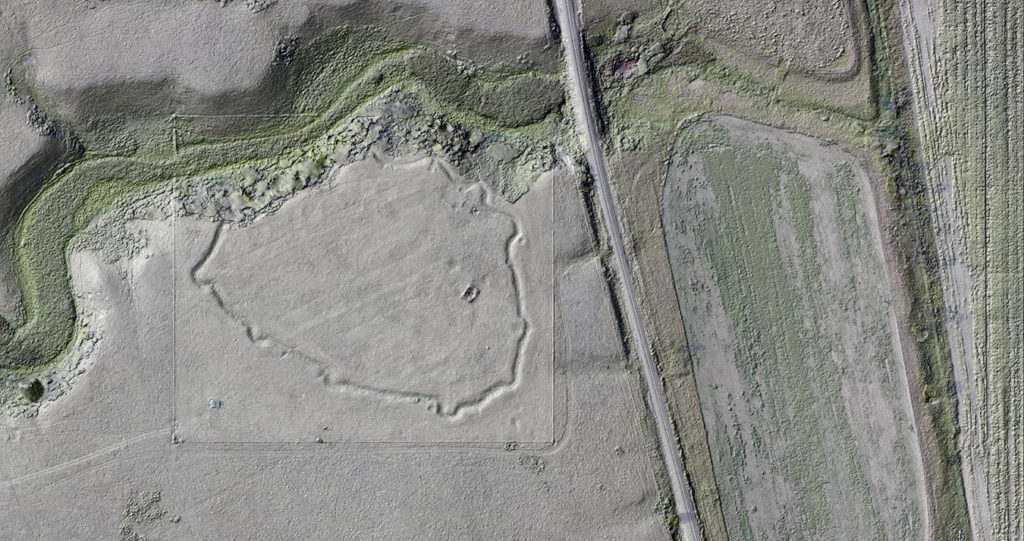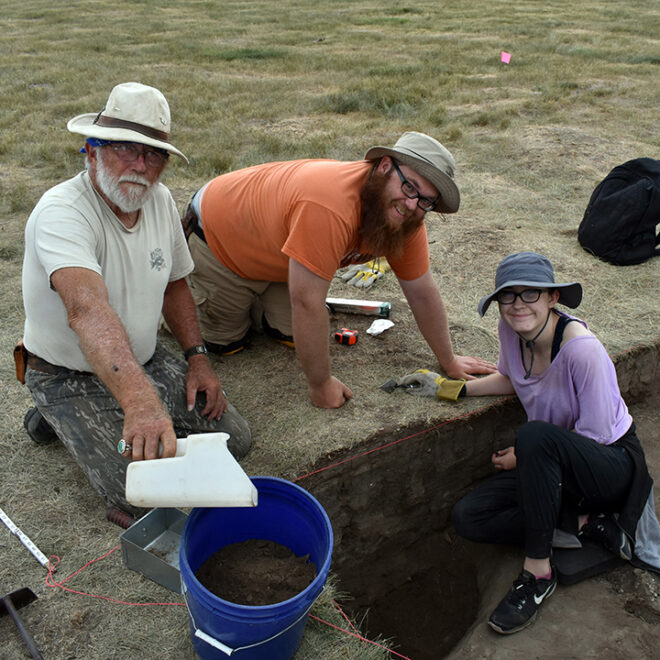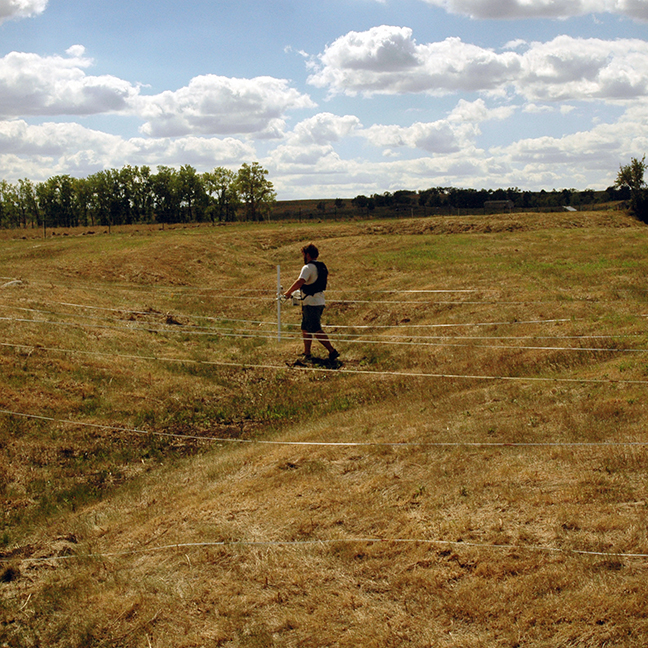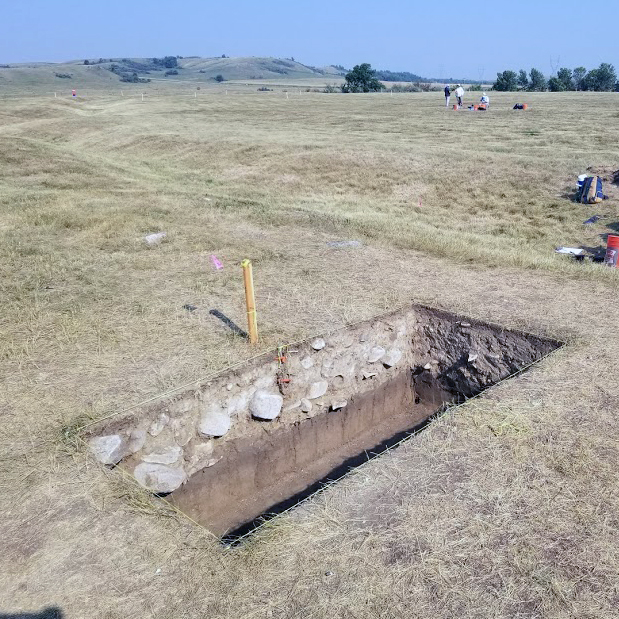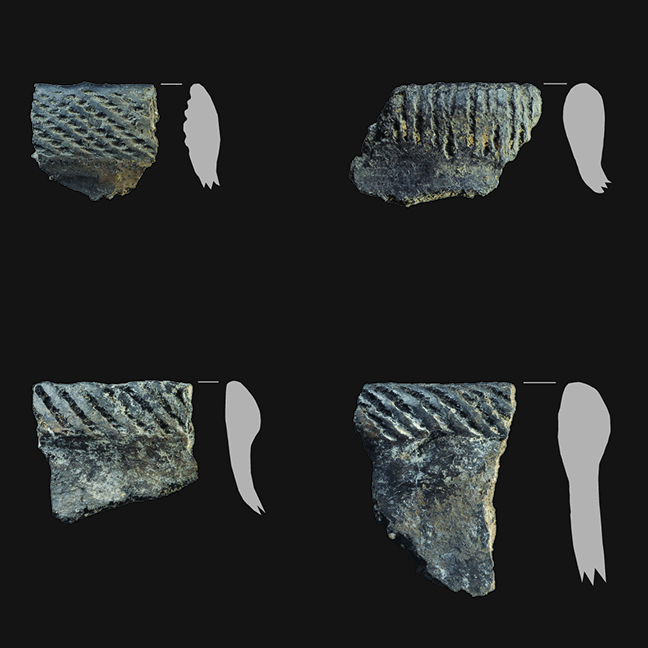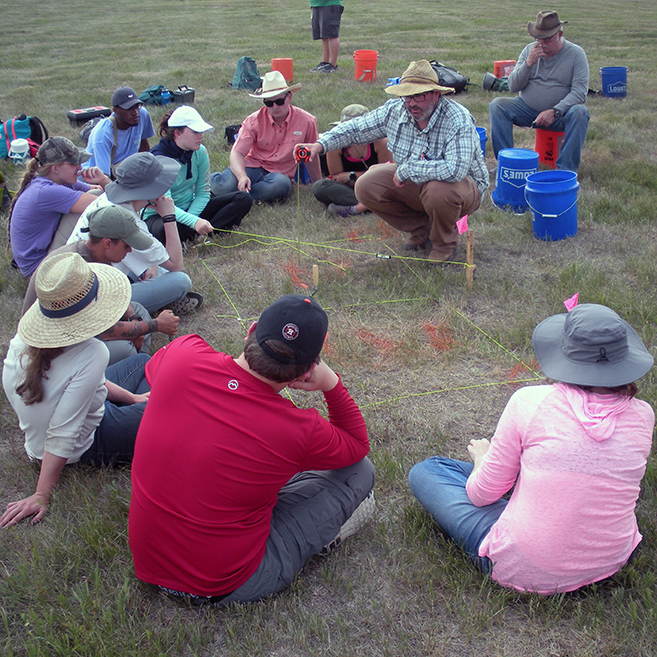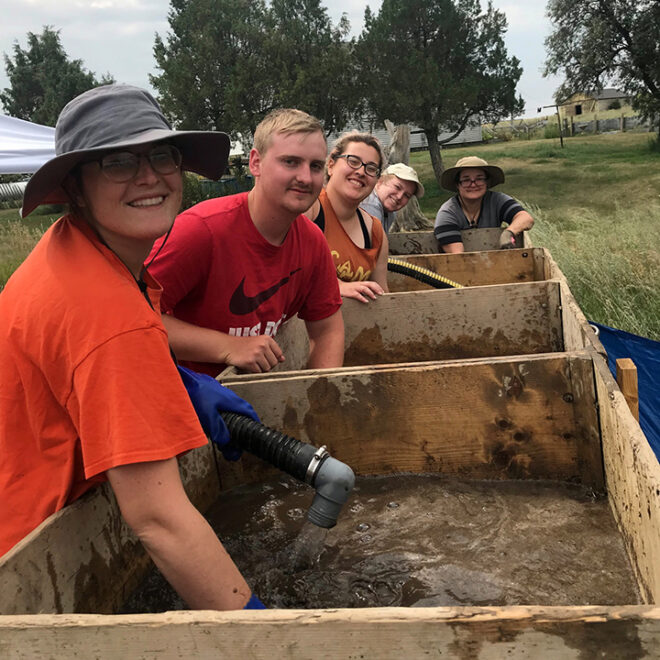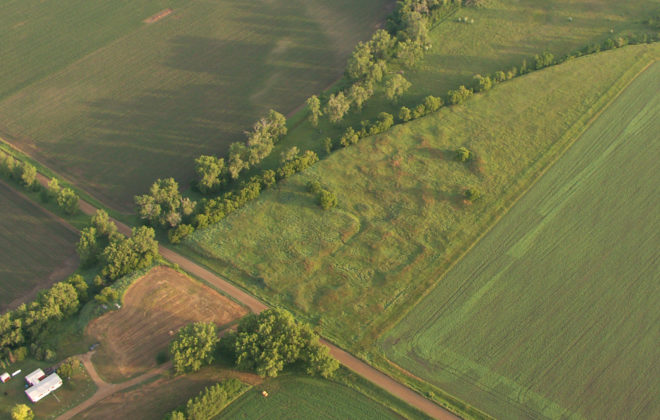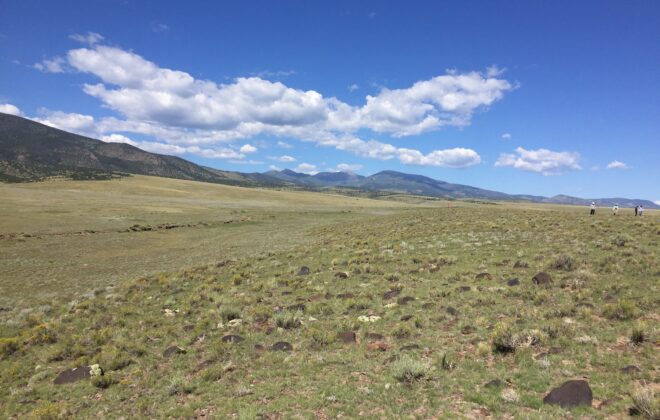Molander Village
The Molander site consists of two Plains Village settlements and an American Settlement-era homestead located in northeastern Oliver County, North Dakota. The larger of the two Plains Village settlements is a fortified earthlodge community covering about 2.1 ha (5.2 acres). Both the fortified community and the homestead, which together were the focus of this project, were purchased by the state of North Dakota in 1935 and are managed by the State Historical Society of North Dakota (SHSND) as Molander Indian Village State Historic Site.
PCRG, in cooperation with Oklahoma State University and the SHSND, conducted an archaeological and geophysical field investigation at the site during 2018. The work built directly on the results of prior geophysical surveys and photogrammetric mapping. The project’s primary objective was to gain a better understanding of Molander’s place in the regional cultural landscape.
Historical documents, traditional histories, and archaeological data together demonstrate that the fortified earthlodge community was occupied between about 1735 and 1765 by the Awaxawi Hidatsa. The Awaxawis likely arrived on the Missouri River from the Northeastern Plains about 1600. By 1787 they had joined the two other Hidatsa divisions at the confluence of the Knife and Missouri rivers.
The project provides new data bearing on the archaeological history of the Awaxawis. Molander’s residents cultivated different kinds of relationships with their neighbors to the north and south. Their ties to the Mandan communities of the Heart River region appear to have been primarily economic. By contrast, Molander’s ties to Hidatsa communities of the Knife River region appear to have been primarily cultural.

